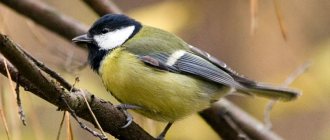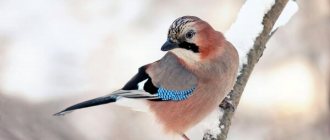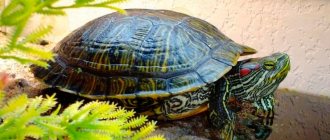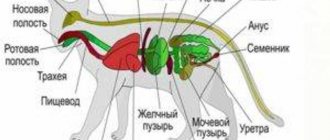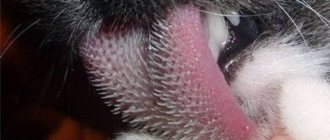Everyone knows that a huge number of spiders inhabit our planet. Spiders are the most ancient representatives of the fauna and have accompanied humans since ancient times.
Some of them are not at all dangerous, but others can cause great harm to humans. The black widow spider belongs to the group of poisonous and dangerous spiders, and in order not to become its victim, you need to know what it looks like and what its main danger is.
Where does the black widow spider live?
- The black widow spider can be found in Russia. But, it lives more in warm regions (Astrakhan, Kalmykia and the Azov region). According to statistics, dangerous spiders have bitten people in the Orenburg, Saratov and Kurgan regions. In 2021, many cases of bites appeared in the Moscow region.
- In Russia, the spider Latrodectus tredecimguttatus, which is one of the varieties of the Black Widow, is often found. Its venom contains only 0.59 mg/kg of the neurotoxin LD 50.
- And in the spider Latrodectus mactans the amount of this substance reaches 0.9 mg/kg. This is why Russian spiders are less dangerous to humans.
Death spiders live in hot regions of North America. In the last few years, they have begun to be noticed even in the Crimea and Moscow region. Scientists are convinced that this is due to climate change around the world.
Spider toxin
Karakurt poison, which has been studied many times due to its effect, consists of 146 toxin-like proteins, which, depending on their function and bioactivity, are divided into five groups:
- neurotoxins (nerve toxins),
- auxiliary toxins,
- peptidases (enzymes that can break down proteins or peptides),
- protease inhibitors (molecules that inhibit peptidases)
- other toxins whose function is unknown.
The majority of the toxins are neurotoxins, which, as in all true widows (Latrodectus), include alpha-latrotoxins (α-LTX), of which the species has 21. They range in size from five to six picometres and have a molecular weight of 110 to 140 kilodaltons and upon binding to certain neuronal receptors causes a massive release of neurotransmitters from nerve endings in a group of animals that must be exposed to the corresponding neurotoxins (nerve poisons). The seven alpha-latrotoxins are latroinsectotoxins (LITs), which are neurotoxic to insects. Nineteen other alpha-latrodinines have effects in vertebrates. In addition, it contains a component called α-Latrocrustatoxin (α-LCT), which causes neurotoxic effects in crustaceans. Other neurotoxins are four ankyrins (pentapeptide repeat proteins) and eight lycotoxins.
Accessory toxins likely include 62 teriditoxins, which appear to serve to enhance the effects of the neurotoxins.
Spider toxin peptidases are formed from 16 trypsins, which help in the maturation of toxins and digestion of food.
Protease inhibitors include nine ctenitoxins, which protect neurotoxins and accessory toxins from proteolytic breakdown of prey, as well as orphan toxins, which block proteases or peptidase inhibitors and prey ion channels. The latter function is also performed by three so-called SCP peptides.
There are also four other toxins whose function is unknown and which are similar in properties to scorpion toxins.
Research has shown that the karakurt spider toxin is similar to the western black widow (Latrodectus hesperus) toxin, especially with respect to the structure of the toxins, hydrolases and inhibitors. However, the venom of the western black widow contains fourteen ankyrins (repetitive proteins), while the venom of the karakurt contains thirteen.
Western black widow (Latrodectus hesperus)
What does a black widow spider look like?
- Females and males differ in body size. The bodies of female spiders reach a length of 8-13 mm, and their weight is no more than 1 g. Females are characterized by a more rounded body shape. Color – rich black, with a glossy shine. Red spots can be seen on the back. They are presented in the shape of an hourglass.
- The male's body is not large. Only 4-6 mm. It has an elongated shape. There are white and red stripes on the sides of the belly. If the male is young, his body will be white. As it matures, it turns orange, brown and black.
- Female and male black widow spiders have 8 eyes. They are arranged equally, in two horizontal rows.
What does a black widow spider look like, photo
Social structure and reproduction
Photo: Black Widow
Black widows usually mate in the spring and summer. The female produces an egg mass containing about 200+ eggs. She covers the eggs with cobwebs, then forms a pouch from this, which should protect the eggs from external influences. The sac is suspended from a web to keep it away from predators.
It takes about two weeks for the eggs to hatch. Very few young spiders survive because they eat each other as soon as they are born. Spiderlings molt several times before reaching maturity. Diet and temperature are factors that influence the development of the offspring.
Remember! Females take 2 to 4 months to mature and their lifespan is about 1.1/2 years. Males mature in 2-4 months and live for about 4 months. They lose their outer covering (exoskeleton) as they grow.
Sexual contacts between mating spiders last longer if the male allows himself to be cannibalized. By sacrificing his life, he can fill his partner with more sperm. The female stores these sperm in two storage organs and can control when she uses these stored cells to fertilize her eggs.
If she has sexual intercourse again, the sperm of the second male may displace the sperm of the first. But females who eat their first mate are more likely to reject a subsequent one.
How does a black widow spider reproduce?
- After mating, the female eats the male. She weaves a cocoon where the laid eggs are placed. Most often, such cocoons are found in the shade (next to a stone, fallen tree or in the ground). The female does not go far from the clutch, and is always on guard. If you see a white cocoon, do not touch it with your hands. After all, this is when the black widow spider can bite.
- After 3 weeks, small spiders appear. They are characterized by white bodies. The female does not think about the fact that she needs to feed her offspring. Therefore, small spiders eat each other and only strong individuals emerge from the cocoon.
Similar species
Confusion sometimes arises with similar species of black widows (Latrodectus), as well as with species from the genus Steatoda, which also belongs to the family of web spiders (Theridiidae), such as the false karakurt, or Paykull's steatoda (S. paykulliana). It is similar to the karakurt in the shape of the opisthosoma and also has noticeable markings, but usually has only one red or yellow transverse stripe on the lower part of the abdomen.
In addition, the karakurt is usually slightly larger than the false karakurt and has a different eye arrangement. In addition, in all steatodes, including false karakurt, unlike black widows, the chelicerae are serrated.
The false karakurt is also found in the Mediterranean and prefers habitats similar to those of the karakurt.
Female false karakurt (Steatoda paykulliana)
Black widow spider bite and venom
- Black widow spiders do not attack first. They attack an animal or person in self-defense . With the first bite, it injects a small amount of a poisonous substance that is not fatal. If a spider bites a child or an elderly person, the risk of death increases. After all, their immune system is not so strong and may not cope with the poison.
- The black widow's bite is not painful. The person does not immediately understand what happened. After a while, when your health worsens, possible causes will be looked for.
The bite can be fatal
Latrodectus mactans bite
Fortunately for humans and other animals, black widows are able to control the amount of poison injected into the victim. Depending on the situation, they may inject their venom, but in most cases this is not the case. The production of venom for a spider requires a lot of energy, and it does not need to bypass the venom in order to feed, so it tries not to waste it again.
The spider uses its bite in two cases: attack and defense. When attacking or defending offspring, the black widow injects a small amount of venom proportional to the size of the victim.
During defense, the spider bites only when it is necessary; it prefers to retreat and escape. Typically, when a black widow bites a person, the bites contain no or minimal venom.
Almost all bites of this spider occur due to the fact that a person stepped on it, or stuck their hand where it lives.
It happens that during the night a spider can build its shelter in a person’s shoes, so putting on shoes in the morning can easily get a bite. Therefore, if you are in the southern United States and if you left your shoes outside overnight, check in the morning that no one has settled in them.
Symptoms of a black widow bite
If you are bitten by a black widow spider, you may not feel it right away. The first symptoms appear after some time.
Symptoms:
- burning in the bite area
- pain in the chest and lower back
- abdominal pain
- dizziness
- rapid heartbeat
- limb tremors
- weakness, nausea and vomiting
- nervous exhaustion
- difficulty breathing
Symptoms
- If you do not see a doctor within the first hours after the bite, there is a high probability of death.
- After a few days, the person begins to experience pain throughout the body.
- On the third day, the patient develops hypertension, hoarseness and increased sweating.
- On the fourth day the temperature rises.
- Full recovery, if you consult a doctor in time, is observed 5-7 days after the bite.
- In severe cases, you may notice body spasms, memory loss, and nerve paralysis.
- Such symptoms disappear 8-9 days after the bite.
False widow
In scientific sources, this spider is called a steatode. Indeed, the two species of arthropods have a huge resemblance in appearance, but the false widow does not have the distinctive feature of a black-red mark and has a slightly lighter color.
The distribution area is warm countries; relatively recently it was brought to the European continent, in particular to England, where the fame of this animal came from. In the 19th century, steatodes in England were recognized as the most poisonous arthropod. Although it is known for certain that after a bite a person will experience a certain malaise for only a few days. Irritation and swelling may appear at the site of the bite, reaching the size of a billiard ball. However, not a single death has been recorded after contact with a false widow.
Antidote for black widow
To cure a patient, doctors use several methods:
- drip with calcium gluconate;
- muscle relaxants.
If the patient is in serious condition and cannot be transported to the hospital, doctors prepare a special serum. The danger of such treatment is that it cannot be used on children and adolescents (under 16 years of age). There is a high probability of an allergy to the serum, so it is administered only under the supervision of a doctor. Experts advise that if you are bitten by a black widow spider, take the arthropod with you (put it in a sealed container or jar). This will make it easier for doctors to prepare an antidote and cure you.
Take it with you to the hospital
Structure of karakurt
The structure of the karakurt
The structure of the karakurt is practically no different from the structure of other spiders. Its body is divided into two sections: the anterior section of the body, with four pairs of eyes, is covered with a hard chitinous shield. The second section is the abdomen, which is covered with an elastic membrane. The arachnoid glands are located in this part of the body. On the head of the body there are two pairs of modified limbs - chelicerae and pedipalps, behind which are walking legs. Spiders have eight of them.
Chelicerae consist of one limb, at the end of which there is a claw into which the poison gland opens. They are designed to grab and hold prey, as well as protect against enemies.
Interesting: How and why do birds fly? Description, photo and video
The pedipalps are similar to the legs, but shorter. They are an organ of touch and usually do not take part in movement. In sexually mature males. They are slightly modified.
What to do if bitten by a black widow?
- Some people try to squeeze out the toxic substance. To do this, the bite site is compressed to form a fold. Then press firmly on this place. A bloody liquid should flow out. It is removed with a clean napkin or rag.
- Carry out the procedure at least 5-7 times to squeeze out the dangerous substance as much as possible. Afterwards, treat the affected area with an antiseptic and apply a bandage. If you notice that you have been bitten by a black widow spider, you first need to cauterize the bite site. Place the head of a match on the affected area of the body, strike the box and light it with another match.
- You can also use metal objects. Heat a fork, spoon, knife or keys on the fire. Apply them immediately to the affected area. But, this method of treatment is suitable for cases where the poison has not had time to spread throughout the body and is on the surface.
- It doesn't matter whether you followed the above methods or not. You should definitely consult a doctor. If you live in a region where dangerous spiders live, treatment will be quick and effective. After all, medical institutions already have serum that needs to be injected into a patient’s vein.
- If a person experiences severe pain from a bite, Novocain or a little alcohol will help him. To remove the poison from your body faster, drink more fluids.
Habitat
This type of spider is distributed throughout the world. They live in regions with temperate climates, incl. in the USA, Southern Europe, Asia, Australia, Africa and much of South America. Can be found in dark, dry shelters, dimly lit areas such as barns, garages, basements, closets, hollow tree stumps, rodent holes, and dense vineyard vegetation. They strive to hide in warm dwellings in winter.
Although previously the black widow spider was not known in Russia, in recent years they have been discovered in the Southern Urals and in the Rostov region. The migration is explained by an increase in air temperature.
An important characteristic of the black widow is its shaggy paw-crests. A row of strong, curved bristles is located on the back pair of legs and is used to pull the web over captured prey
How to avoid becoming a victim of a black widow spider?
If you like to go camping overnight, choose the right place to stop. Do not stay overnight in a place where there is a lot of grass and bushes. The territory of a private house can be treated against the black widow spider and other arthropods with the insecticide “Creozol”.
Timely treatment and preventive measures are important.
If you are relaxing in nature, follow these recommendations:
- carry out all work in the garden only in the correct protection. Wear gloves, closed shoes and long sleeves;
- Do not walk barefoot near a pond;
- stay away from dry grass.
Where does he live?
Most of these spiders live in hot countries. They are found in the Caucasus and Central Asia, in Ukraine. For homes, they choose cracks in stones and walls, burrows of small rodents, steppes and salt marshes, and sometimes even settle on arable land. Spiders can be found in yard buildings.
These animals do not like bushes and dense grassy meadows and deserts.
You can find nests on grass stems closer to the ground. This is the place that spiders prefer; here they set up a trapping net and lay eggs.
Interesting facts about the black widow spider
There are several interesting factors associated with dangerous spiders:
- The first antidote for a black widow bite was invented only in 2015.
- It is the females that pose the greatest danger to humans. They contain a large gland with poison. In males it is smaller.
- Scientist A. Blair deliberately allows a spider to bite himself in order to prove to the public that it is life-threatening.
- The blood of a black widow spider has a bluish tint. This is due to the fact that it contains iron ions.
So, now you know that the black widow spider is one of the most dangerous species. The poison can not only cause paralysis, but also lead to death. Therefore, you should immediately consult a doctor. Try to stay away from tall grass, because this is where dangerous individuals live. Take care of yourself.
We have also prepared interesting articles:
- Signs about spiders
- Spider insect or animal
- What is the difference between the body structure of spiders and scorpions?
- Why you shouldn't kill spiders at home
Keeping at home
Some originals have all kinds of exotic animals at home and even try to breed them. Spiders were also among the chosen ones. In principle, keeping and feeding them is not difficult, there is a lot of information on the Internet, but getting offspring is already a problem.
As for the black widow, one of the most dangerous spiders in the world, experts categorically do not recommend keeping it at home or breeding it for non-professionals.
Chasing the exotic, you forget about the basic instinct of self-preservation. The result can be disastrous, because despite the shyness, 5% of attacks of such a pet end fatally.
The black widow produces a dirty, dense web. Her canvases are usually located near ground level and under protected overhangs, such as under furniture or a wooden porch on stilts. Red hourglass markings will also indicate the presence of this species
Effect of poison
A barely noticeable red dot from a bite will trigger a chain reaction throughout the body: after a quarter of an hour, a burning pain will engulf the entire body (especially in the chest, abdomen and lower back).
Characteristic symptoms will appear:
- tachycardia and shortness of breath;
- redness or paleness of the face;
- dizziness and tremors;
- headache, vomiting and sweating;
- heaviness in the chest or epigastric region;
- bronchospasm and priapism;
- inhibition of defecation and urination.
Later, intoxication turns into a depressed state, clouding of consciousness and delirium.
Lifestyle
Karakurt: male and female
The main difference between a male and a female among karakurts is size. The female is almost twice the size of the male. It can reach two centimeters in length, while the male does not grow more than seven millimeters. In addition, the male has red spots on his abdomen. The female's body is colored deep black. Karakurts, like other spiders, are good runners and can cover quite long distances and at high speed. This is all the more surprising, because the spider’s limbs completely lack muscle fibers.
In addition to moving, the spider uses its legs to dig holes and weave webs. The legs also have olfactory and tactile organs.
Karakurts, like all spiders, are predators. They catch their prey with a web. Spiders insert chelicerae into captured prey, releasing venom and digestive juices. Having entangled the victim in a web, they leave it for a while. Digestive juices quickly digest the prey, after which the spiders suck out the resulting broth.
Where he likes to live in nature
European species of these spiders prefer desert and steppe areas with sparse vegetation. A favorite place is the shores of salt lakes, which are often found in Crimea. In coastal vegetation on beaches, in sagebrush thickets, in wastelands and along river banks, in ravines and in garbage heaps. They often settle in colonies. A characteristic feature of the home of a karakurt colony is a chaotic layer of cobwebs on the surface of the earth.
How to determine the habitat of this spider
